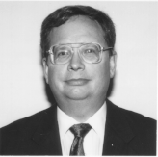A study by a UNMC researcher has shown that gene therapy can kill tumor cells that otherwise are returned to cancer patients following high-dose chemotherapy, while keeping the good cells intact.
In a report published in December in Cancer Gene Therapy, James Talmadge, Ph.D., announced that his group was able to purge tumor cells without affecting the stem cells needed to make the high-dose chemotherapy patient healthy again. 
“When cancer patients turn to transplantation for treatment, oftentimes the stem cells that are re-inserted into their body aren’t completely cancer-free,” said Dr. Talmadge, professor of pathology and microbiology at UNMC and principal investigator on the study. “Treating stem cells with adenovirus protects the numbers of healthy cells replaced in the body and reduces cancer cell numbers to levels researchers never have seen before.”
Dr. Talmadge’s group used adenovirus vectors, a common virus naturally found in the lungs, to carry a gene to breast cancer cells. The gene, p53, inhibits tumor growth. The adenovirus vectors, or delivery systems, used in these studies were replication incompetent, meaning they are unable to cause infection.
In adult stem cell transplantation, a large number of stem cells are removed from the body before a patient is given a high-level dosage of chemotherapy. While the cells are outside the body, they can be treated with a process called “purging” to reduce the number of tumor cells contaminating the stem cell product. Generally, purging kills most of the tumor cells and as many as 30 to 50 percent of the stem cells, a problem Dr. Talmadge and his collaborators were able to overcome using adenovirus gene therapy.
“It is clear that the cells within the stem cell products used in transplants can cause cancer, based on retrovirus studies reported previously by other researchers,” Dr. Talmadge said. “At this time, there isn’t a good, clear way to purge stem cells completely of cancer. Either you miss some tumor cells or you lose healthy stem cells, which is a problem because re-inserting healthy cells is the point of the transplant protocol.”
Dr. Talmadge, working with Canji Inc., a biotechnology company in San Diego that is affiliated with Schering-Plough Corporation, sought to find a way to limit tumor cells from being re-inserted in humans. Through this research, Dr. Talmadge discovered that incubating stem cells with adenovirus for a four-hour period kills tumor cells without having an impact on stem cells.
“In a further test we re-inserted these human stem cells into a mouse without an immune system,” Dr. Talmadge said. “The human hematopoietic stem cells in those mice grew, while the tumor cell levels were reduced to all-time lows.”
Hematopoietic cells are found in bone marrow and help red blood cells, white blood cells and platelets regenerate after stem cell transplants. Normally, these cells are weakened severely by chemotherapy, causing cancer patients to become anemic, neutropenic and to develop life-threatening infections.
In this study, scientists purged the stem cell products used to rescue patients following high-dose chemotherapy of the contaminating tumor cells. These stem cells were then used to treat severe combined immunodeficient mice and allow them to generate human blood cells. The unique aspect of these studies was that adult human stem cells were used to reconstitute these myelosuppressed mice, demonstrating that the human stem cells remained fully functional. Earlier in vitro studies examining this dilemma were encouraging, but in those experiments it was not possible to determine if the purged stem cells were unable to produce all of the blood elements needed for recovery following high-dose chemotherapy.
To prove that the hematopoietic cells were regenerating after transplant, Dr. Talmadge took hematopoietic cells out of the mice and used them to rescue another group of mice, again with no immune system. Multiple tests on mice produced the same results, proving that these cells were self-renewing and would not exhaust themselves following transplantation and so could continue to produce cells throughout the lifespan of the transplanted patient, in this case a mouse.
Initial testing focused on breast cancer, but Dr. Talmadge said other types of cancer, such as ovarian cancer, have been targeted for further studies. The Nature Publishing Group published the research in Cancer Gene Therapy, a monthly scientific journal highlighting the latest cancer and gene therapy discoveries.
Clinical trials won’t be starting any time soon, Dr. Talmadge said. Adenovirus vectors received an undeservedly bad reputation from an incident in Philadelphia, he said, and transplantation for breast cancer has yet to demonstrate a significant prolongation of survival. Dr. Talmadge said that as the use of adenovirus in gene therapy becomes better accepted, he hopes human trials will be initiated.